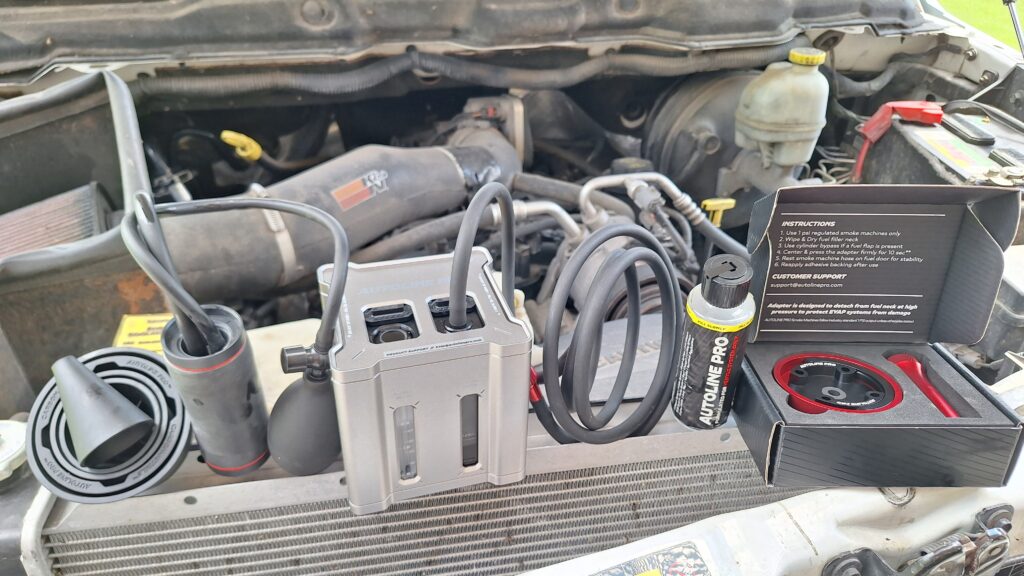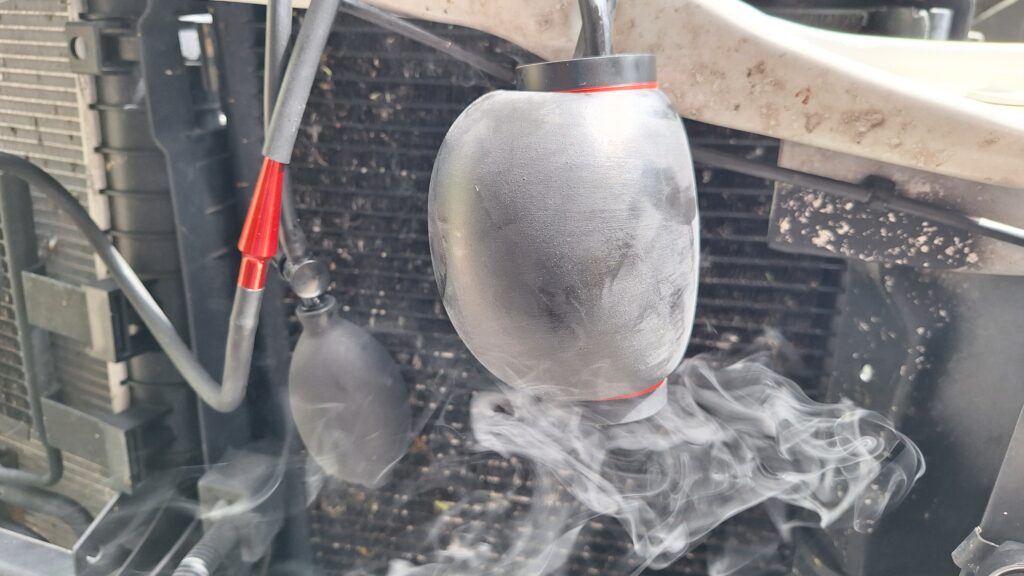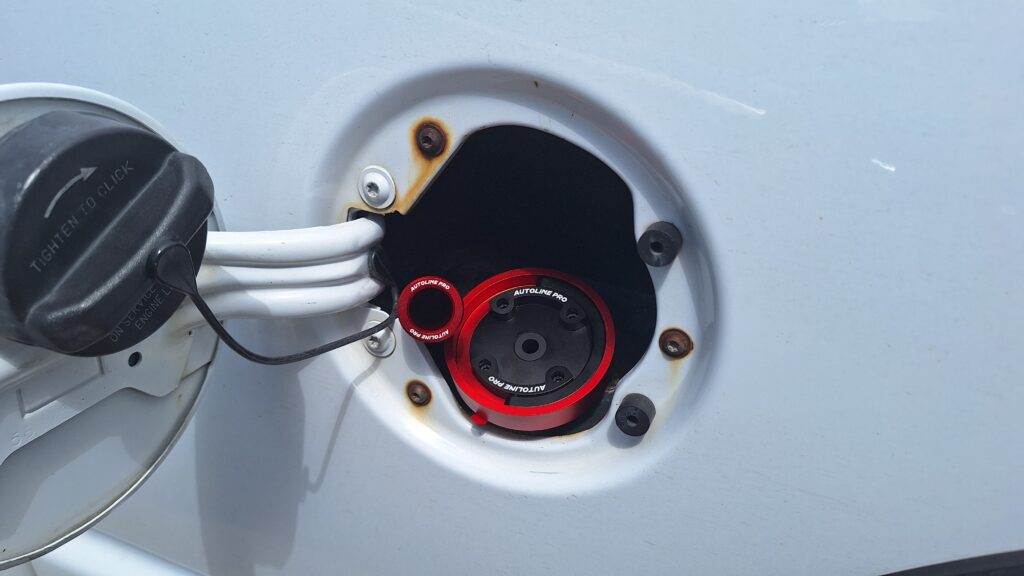
There are few things in life that can drive a person to go mad. And two of those things live within automobile repair. If you work on cars for a living, or are a weekend warrior, you may know these two such maddening things. One being electrical gremlins, and the second being an EVAP leak. We’re going to focus on EVAP leaks aka Evaporative Emissions System leaks. As an automobile owner, I have at least once had the dreaded check engine light popup on the dash of every one of my cars. And without even having to think about it, I know at least 75% of those check engine lights had to do with an EVAP leak. It’s quite possibly the most common cause for a check engine light on every car that contains such a system.
If you’re familiar with EVAP leaks, 80% of them is caused by a faulty or worn out gas cap. But, there’s that dreaded 20% of the time it’s something else. And that is where you have seen grown men and women pull their hair out and cry. Why is this? Plain and simple, leaks in the EVAP system are extremely difficult to locate. There are a handful of tips and tricks to try and find them. One of these tricks is to use a bottle of propane. Basically without lighting the propane you use a hose to push propane gas around possible areas you may have a leak with the engine running. If you do get the propane in or around the leak, the car will rev its rpms a little higher. Another trick is to spray soapy water on possible areas of a leak, in hopes it will produce bubbles. I personally have seen these tricks work sometimes and not work at all other times. It’s maddening I tell you.
One of the most tried and true ways to locate an EVAP leak is a smoke test. A smoke test is essentially a test where smoke is introduced into the EVAP system. The goal being, wherever the leak may be, the smoke will leak out and become visible. This gives the tester a great visual of where the leak is as the smoke is easy to see and emits directly from the leak source. Long story short, we had a vehicle develop an EVAP leak and per the codes we read from the ODBll port on the car, it was a large leak. So yes we replaced the gas cap as our first cheap and simple repair to see if that was the culprit. It sadly was not. We went the route then of using soapy water which in turn cleaned our engine bay nicely but found no leaks. After that we tried the propane method. And as you guess it, no dice. These are the moments a person questions if the car should just be driven off a cliff. But thankfully the heavens opened up and we happened upon Autoline Pro, and their new Ventus smoke machine. Resulting in our sanity being preserved.
Autoline Pro has a history of producing some fantastic quality smoke machines that mechanic shops as well as at home mechanics use daily. The Ventus is their latest and definitely greatest machine by far. Your typical smoke test machine needs a power source to run it. In fact every smoke machine that I have seen has two cables coming out of them that attach to the car battery to source the power for the machine. The Ventus is completely different in the fact that it uses a rechargeable internal battery to power the unit. This substantially makes for a cleaner and easier working area when running the machine. How about we talk about the fluid used to produce the smoke. Across the industry the smoke produced by other machines has a horrible smell. I haven’t had the pleasure to inhale it myself but I’ve heard it’s pretty rank. Autoline Pro has a proprietary smoke fluid that literally has no smell. Yes, I sniffed it and I can vouch. One of the biggest features that stands out to me about the Ventus is its internal compressor. Basically, a vehicles EVAP system has various rings and hoses in it. With that, if you over pressurize the system, you can blow out those o-rings or hoses. I have seen people make their own smoke machines and use bicycle pumps to push the smoke into the system. Although cheap and amusing, this can severely damage the system you’re trying to fix. The Ventus’s internal compressor is regulated to 1 psi making it perfectly safe to use on your vehicle’s EVAP system.

Lets not forget some other fantastic features on this machine. The Ventus comes with a hook you can attach to it, making it so you can hang it from the opened hood of the car or other areas. Again, I like a clean work area myself. The Ventus had gobs and gobs of accessories too. Our personal favorite is the inflatable bladder that you can insert into the intake hose of that car. It essentially inflates with a hand pump and seals off the hose while pushing smoke through the other end. Thus giving you a nice sealed system to push the smoke into and find that dang leak. Other attachments which by the way are genius themselves include our second favorite the gas cap seal. This is essentially a cap that has a flat sticky side on it that seals itself to the filler neck of your gas tank. It has a hole in the middle for you to push the smoke into. Bam, you’re smoke testing your filler tube, gas tank and all the other aspects of the EVAP system at the rear of the vehicle. The Ventus also has plugs you can use to seal up the intake tube as well. They come in various sizes to handle whichever area you need to plug up and then introduce smoke into. It’s one of the most well thought out diagnostic systems I’ve seen in a long time. Heck, it can help you find exhaust leaks too. It’s not just a one use machine. It’s going to save you money.

And lets not forget that smoke fluid while we are at it. One 4 oz fluid of smoke can last up to 75 hours of continual use. And isn’t that what a tech or mechanic needs? I say yes. Shops need products that are reliable and pay for themselves to use. If it’s hard to use or has a high operating cost it’s not getting pulled off the shelf very often. Did I mention the flow of smoke? The Ventus uses what is called Atomic smoke technology to atomize liquid particles to instantly generate smoke. And it’s a heaping amount too, plenty of flow to be seen for sure.
In our personal experience, it was one of the easiest products we’ve ever used for diagnosis. And by that you don’t need to attend a course to understand how to use it. We read the instructions and were off and running in 2 minutes. The charging time on the battery (which charges via USB-C connection) was extremely quick. Maybe 30 minutes for our first run. We poured the fluid in which is not difficult at all, pressed the power button and the smoke show began. Oh, that glorious smoke show and all it’s beauty. While we are basking in smoke show dreams. I don’t want to forget one super important feature of the Ventus. It has a leak detection mode as well. You can press the power button and go into leak detection status. It pressurizes the system and can give you a reading in L/Min of the size of your leak in the system. Mind blowing I know.
If you’re a cut to the chase type of person, here’s how it went for us. We pressurized that EVAP system like we owned the thing, which we do. We put the inflatable bladder into the intake air hose right after the air filter box and pumped it up to get a perfect seal. Within 2 minutes the entire system had smoke in it. And within 3 minutes we found our leak. It was literally a loose air hose attached to our turbo. Which in our situation was at the bottom of the engine bay. A spot we would never have tested because it was so inaccessible. Yet there it was plain as day, smoke pouring out of that loose hose.
The Ventus did for us in 3 minutes what we couldn’t do in 3 weeks. These are the types of machines that make auto repair fun. And these are the types of machines that change the way we do diagnostics on vehicles. The Ventus isn’t just a tool, it’s a problem solver.
If you were on the fence about getting one, or this is the first time you’ve ever heard of the Ventus. Here is your recommendation. Get the Ventus and never look back.
The Ventus can be purchased at the link below:
https://www.autolinepro.com?ref=jason_bean

